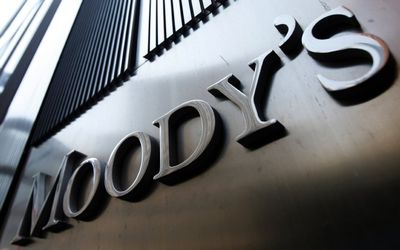WHEN rating agency Standard & Poor’s (S&P) downgraded Poland’s credit rating earlier unexpectedly this year, one of the issues was media freedom. The rating agency cited concerns about new laws enacted by Poland’s new government that it said could weaken the independence of public broadcasters and make them mere political instruments. For S&P, this was part of a broader concern that Poland’s system of institutional checks and balances had been eroded significantly by a series of new laws.
Poland’s rating is still comfortably investment grade — unlike SA’s, which is in danger of descending to junk.
But the S&P move in Poland reflected the change in recent years in the way ratings agencies rate countries, one that Finance Minister Pravin Gordhan has touched on a couple of times recently. Rating agencies used to focus primarily on fiscal metrics. But increasingly, they have looked at questions of political economy and politics in their quest to assess governments’ ability to pay back their debt.
That’s a problem for Gordhan, who is putting up a heroic fight to save SA’s investment-grade rating, teaming up with business and trade union leaders last week on a road show to investors holding R600bn of SA’s total outstanding debt stock of R2-trillion.
But, while Gordhan and his partners could tell investors of the bold steps they plan to try to accelerate economic growth and strengthen the public finances, what they presumably could not do was guarantee political support across government.
So, how close is SA to full-on junk status, and what happens if it goes there? The most serious threat is from S&P, which has SA just one notch into investment grade, with a "negative outlook". The most imminent threat of a downgrade is probably from Moody’s, which last week put SA on "review", but still has us two notches away from junk status. A two-notch downgrade is possible, but unlikely — a multi-notch downgrade generally makes the agency itself look bad, unless it’s a response to an unexpected event, such as an oil-price shock.
S&P and Fitch are governed by European laws, which require them to review ratings in line with a schedule, which is why if they act, they are likely to do so at the time of the June or December scheduled ratings. But although Fitch’s rating is the same as S&P’s, its outlook is stable, so it is not looking to downgrade.
Moody’s doesn’t work to a schedule as the Europeans do, because its SA analyst is based in New York. It put SA on negative outlook in December, and has now followed up by putting us on review, which means it is working actively to decide whether to downgrade, generally within one to three months. That would affect not only SA’s government debt, but also the debt of all the parastatal and corporate borrowers, including the banks, whose rating is linked to that of the sovereign — which is why Moody’s last week put all those on review too.
The upshot could be that SA has a "split rating", with at least one of the agencies at sub-investment grade.
Broadly speaking, the result will be to cut the price of bonds and raise the yields — increasing the cost of borrowing for all concerned. A downgrade is expected to result, too, in capital outflows as foreign investors sell off SA bonds, so weakening the rand. However, the implications are hard to estimate with any precision.
They depend, firstly, on the extent to which a downgrade to junk status has been priced in by financial markets, which already seem to be pricing in a 50% chance.
They depend, too, on how many agencies downgrade, and which ones. Many institutional investors have mandates that require them to invest only in investment-grade paper. But while some may accept a split rating, others may not.
Another big question is whether SA’s domestic currency rating would be downgraded — which could make a sell-off by international investors far worse because more than a third of SA’s local currency government bonds are held by foreigners, with the domestic currency debt included in the benchmark WGBI index.
Particularly worth watching are SA’s big five banks. A downgrade is likely to affect them disproportionately, because not only would their own ratings follow suit, but they are also subject to liquidity and capital requirements that mean they have to hold large quantities of government bonds and treasury bills. The value of that government paper will fall if it is downgraded, and that will mean the banks have to go out and buy more liquid assets to meet the regulatory requirements.
The big banks will all have been doing some furious modelling in the past year, stress-testing what junk status could mean for their numbers and their businesses. Nedbank was one that devoted a few slides at the end of its results presentation last month to just this issue. Nedbank CEO Mike Brown emphasises that SA’s banking system is in much better shape to deal with a stress event than it was at the time of the global financial crisis.
Nedbank has conducted a detailed exercise and is very confident that it and its peers can cope with a downgrade. They are resilient. But they can say goodbye to asset or earnings growth if it happens.
It’s a pretty miserable prospect for the banks, and their customers.
• Joffe is associate editor of Business Day





















Change: 1.19%
Change: 1.36%
Change: 2.19%
Change: 1.49%
Change: -0.77%
Data supplied by Profile Data
Change: -0.19%
Change: 0.69%
Change: 1.19%
Change: 0.00%
Change: 0.44%
Data supplied by Profile Data
Change: 0.62%
Change: 0.61%
Change: 0.23%
Change: 0.52%
Change: 0.12%
Data supplied by Profile Data
Change: -0.21%
Change: -1.22%
Change: -0.69%
Change: -0.51%
Change: 0.07%
Data supplied by Profile Data